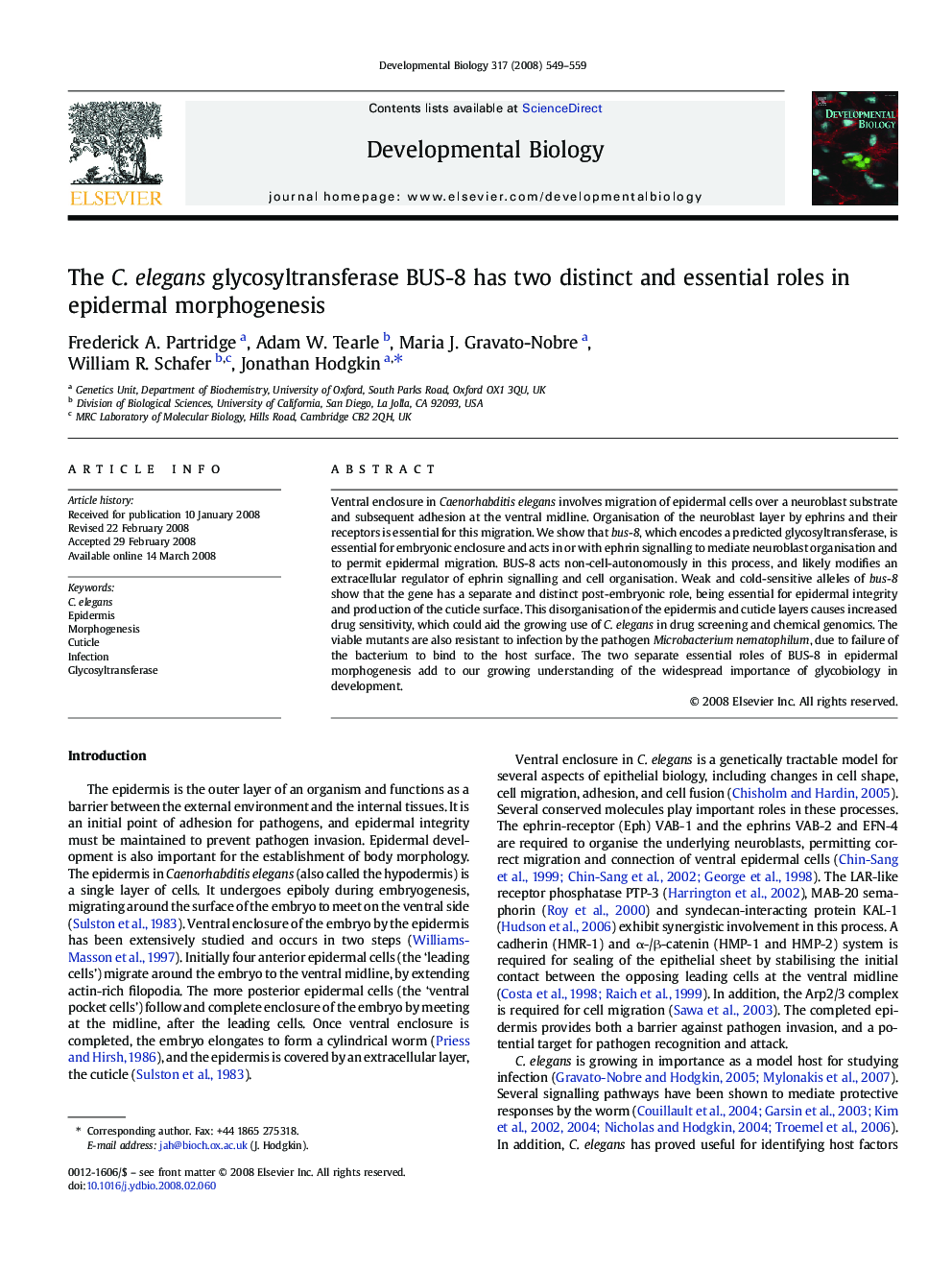| Article ID | Journal | Published Year | Pages | File Type |
|---|---|---|---|---|
| 10933588 | Developmental Biology | 2008 | 11 Pages |
Abstract
Ventral enclosure in Caenorhabditis elegans involves migration of epidermal cells over a neuroblast substrate and subsequent adhesion at the ventral midline. Organisation of the neuroblast layer by ephrins and their receptors is essential for this migration. We show that bus-8, which encodes a predicted glycosyltransferase, is essential for embryonic enclosure and acts in or with ephrin signalling to mediate neuroblast organisation and to permit epidermal migration. BUS-8 acts non-cell-autonomously in this process, and likely modifies an extracellular regulator of ephrin signalling and cell organisation. Weak and cold-sensitive alleles of bus-8 show that the gene has a separate and distinct post-embryonic role, being essential for epidermal integrity and production of the cuticle surface. This disorganisation of the epidermis and cuticle layers causes increased drug sensitivity, which could aid the growing use of C. elegans in drug screening and chemical genomics. The viable mutants are also resistant to infection by the pathogen Microbacterium nematophilum, due to failure of the bacterium to bind to the host surface. The two separate essential roles of BUS-8 in epidermal morphogenesis add to our growing understanding of the widespread importance of glycobiology in development.
Related Topics
Life Sciences
Biochemistry, Genetics and Molecular Biology
Cell Biology
Authors
Frederick A. Partridge, Adam W. Tearle, Maria J. Gravato-Nobre, William R. Schafer, Jonathan Hodgkin,
